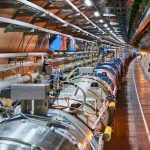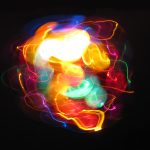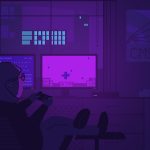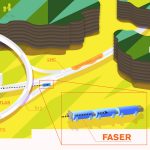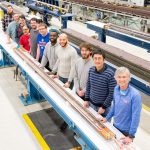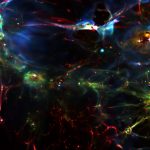A pioneer in particle physics and high-performance computing, Fermilab has launched HEPCloud, a cloud computing service that will enable the lab’s demanding experiments to make the best, most efficient use of computing resources. This flagship project lets experiments rent computing resources from external sources during peak demand, reducing the costs of providing for local resources while also providing failsafe redundancy.
Large Hadron Collider
From Listverse, May 3, 2019: The Dark Energy Camera made this list of 10 brilliant feats of scientific technology, along with LIGO, the Pierre Auger Observatory and the Large Hadron Collider.
From EarthSky, May 2, 2019: University of Chicago physicists and a former Fermilab scientist have laid out an innovative method – using the Higgs boson – for stalking dark matter. He said the Higgs might actually be “a portal to the dark world.”
It’s not always about what you discover. The LHC research program is famous for discovering and studying the long-sought Higgs boson. But out of the spotlight, scientists have been using the LHC for an equally important scientific endeavor: testing, constraining and eliminating hundreds of theories that propose solutions to outstanding problems in physics, such as why the force of gravity is so much weaker than other known forces like electromagnetism.
One of the latest discoveries from the LHC takes the properties of photons beyond what your electrodynamics teacher will tell you in class. For most of the year, the LHC collides protons, but for about a month each fall, the LHC switches things up and collides heavy atomic nuclei, such as lead ions. The main purpose of these lead collisions is to study a hot and dense subatomic fluid called the quark-gluon plasma, which is harder to create in collisions of protons. But these ion runs also enable scientists to turn the LHC into a new type of machine: a photon-photon collider.
One day in 2017, the idea to detect particles that had potentially been escaping the LHC for years unnoticed by the gigantic detectors suddenly became feasible. The story of the latest experiment approved for installation at the Large Hadron Collider starts with a theorist and a question about dark matter.
The U.S. Department of Energy has approved the scope, cost and schedule for the U.S. LHC Accelerator Upgrade Project and has given the first approval for the purchase of materials. This project brings together scientists, engineers and technicians from national laboratories — such as Fermilab, Brookhaven, Berkeley, SLAC and Jefferson labs — to develop two cutting-edge technologies to advance the future of both the Large Hadron Collider and broader collider research.
With the warmth of holiday cheer in the air, some physicists decided to hit the pub after a conference in December 2014 and do what many physicists tend to do after work: keep talking about physics. That evening’s topic of conversation: dark energy particles. The chat would lead to a new line of investigation at the Large Hadron Collider at CERN. Every second, the universe grows a little bigger. Scientists are using the LHC to try to find out why.
If you want to visit the Pasner family farm, you’ll need a truck with four-wheel drive. You’ll need to traverse 4 miles of bumpy dirt road deep into the countryside of Penn Valley, California. But once you arrive, you’ll be greeted by fields of organic onions and garlic, nestled between rolling grassy hills speckled with oak trees. For physicist Jake Pasner, this will always be home.


